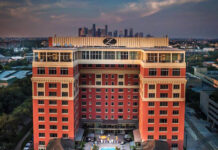Return on investment (ROI) is always top of mind when considering the purchase of hotel systems. Few want to buy a system that will pay for itself in five to 10 years—especially those with a bent toward flipping a property. Many hoteliers demand an ROI of two years or less. That is often achievable, especially with the help of a rebate or government incentive. Sometimes you need assistance to justify investment in a system that helps your property become more sustainable (e.g., reduce its carbon emissions). That said, with large-scale renewable energy systems (solar, wind, cogeneration, etc.), rebates or incentives are just not enough to convince a hotel owner to pull the trigger on an investment.
Fortunately for those interested in purchasing more costly, large-scale power-generating systems, suppliers have gotten creative with their business models. Power purchase agreements (PPAs), ones that require no money down on the part of the hotel owner, have become quite common and prominent hotel companies and entrepreneurs are taking advantage of that option.
The most prominent recent example of a PPA is one involving MGM Resorts International and NRG Energy Inc. Late last October, NRG Energy and MGM Resorts International announced the completion of the world’s largest rooftop solar array on a convention center. Covering approximately 20 acres atop the Mandalay Bay Resort and Casino, the 6.4 megawatt (MW dc) photovoltaic array will produce enough electricity to power the equivalent of approximately 1,000 U.S. homes annually and is the first of its kind on the Las Vegas Strip.
MGM Resorts and NRG are also building an additional 2 MW dc photovoltaic array atop an expansion of the Mandalay Bay Convention Center. Once completed—possibly as early as August this year—that system, combined with the first solar installation, is expected to provide pricing stability and reduce energy draw from the southern Nevada grid during the hottest time of the day, which is also peak electricity demand. During peak demand, the solar installation should provide about 26 percent of the building’s electricity.
Mandalay Bay is buying the energy created by the array though a PPA with NRG Energy. Chris Brophy, vice president of corporate sustainability division for MGM Resorts International, said NRG funded and built the array and also will on the expansion. NRG is selling power directly to Mandalay Bay. That cost for the electricity is at a lower rate than what would be purchased from NV Energy. NRG is responsible for the maintenance of the system. Not a bad deal.
Brophy said the first phase of the installation on Mandalay Bay Resort Conference and Convention Center is a proof of concept, adding that MGM Resorts International is putting out a portfolio-wide RFP that would cover just about all of its properties with solar—seven additional properties.
Similarly, almost exactly two years ago, the owners of the New York Hilton in Midtown Manhattan worked out an agreement with Anaergia Inc. that saw the hotel get a cogeneration plant that generates 1,750 kW of clean electricity and 2,700 kW of heat for building operations. This satisfies more than 50 percent of the electricity demand and 35 percent of the steam demand for the nearly 2,000 guestrooms. Anaergia designed, built, owns, and operates the clean energy system. The Hilton is purchasing the energy through a PPA. The system is expected to reduce operating expenses of the building by nearly half a million dollars each year over the 20-year life of the contract. Again, a great deal.
Expect PPAs to become even more popular in the months and years ahead as renewable energy system costs continue to go down and increasing numbers of vendors offer such systems and services.
About the Author
Glenn Hasek is the publisher and editor of Green Lodging News. To subscribe to the weekly Green Lodging News e-newsletter, go to www.greenlodgingnews.com.










